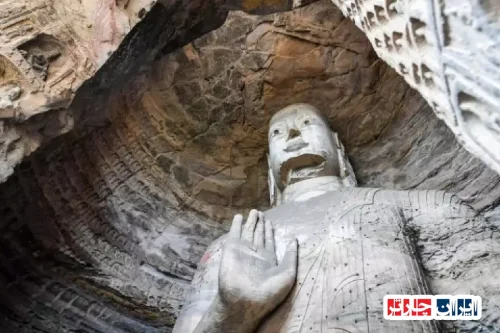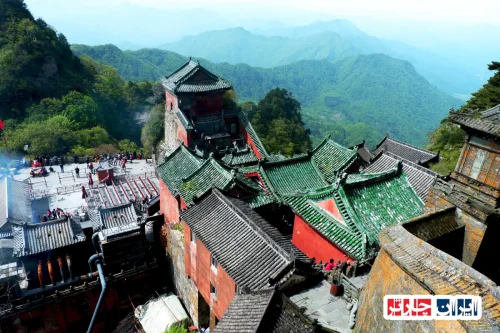Discover the Rich Heritage of Qufu Confucius Temple in Shandong Province China
Qufu Confucius Temple in Shandong Province China stands as a testament to the profound cultural and philosophical legacy of ancient China. This historic site, renowned for its exquisite architecture and deep spiritual significance, attracts millions of visitors each year who come to explore the birthplace of Confucius and immerse themselves in the traditions that have shaped Chinese civilization for over two millennia. The temple complex, with its majestic halls, intricate carvings, and serene courtyards, embodies the essence of Confucian values such as respect, harmony, and moral integrity. Visitors to this sacred site can witness the enduring influence of Confucian teachings on Chinese society and gain a deeper understanding of the cultural roots that continue to inspire millions worldwide. Whether you are a history enthusiast, a spiritual seeker, or a traveler interested in exploring China’s rich heritage, the Qufu Confucius Temple in Shandong Province offers an unparalleled journey into the heart of Chinese philosophy and tradition.
For more detailed information about this remarkable site, visit our dedicated page on Qufu Confucius Temple-Iran Charter. Discover the significance of this UNESCO World Heritage site and learn how it continues to influence cultural and educational practices across the globe. Explore the history, architecture, and ongoing celebrations that keep the spirit of Confucius alive in modern times, and understand why this temple remains a symbol of wisdom and moral virtue in Chinese culture.
Discover the Rich History of Qufu Confucius Temple in Shandong Province, China
The Qufu Confucius Temple in Shandong Province, China, stands as a testament to over two millennia of Chinese history and culture. Originally built as a small shrine honoring Confucius, it has undergone numerous renovations and expansions, reflecting the evolving reverence for this great philosopher. Throughout its history, emperors and scholars have contributed to its grandeur, making it a symbol of Chinese wisdom, tradition, and spiritual heritage. Today, the temple not only commemorates Confucius’s life and teachings but also serves as a cultural hub attracting millions of visitors worldwide. Its historical significance is recognized globally, and it remains a vital part of China’s cultural landscape, embodying the enduring legacy of Confucian philosophy in Shandong Province, China.
Architectural Marvels and Traditional Design Elements of Qufu Confucius Temple in Shandong Province, China
The architecture of the Qufu Confucius Temple in Shandong Province, China, exemplifies traditional Chinese design, blending aesthetic beauty with cultural symbolism. The layout follows classical principles, with a series of courtyards, pavilions, and halls aligned along a central axis. The roofs feature sweeping curves and are adorned with glazed tiles, primarily in yellow, symbolizing imperial authority. Decorative elements such as carved wooden beams, stone lions, and intricate brackets showcase masterful craftsmanship. The use of feng shui principles ensures harmony and balance within the complex, reflecting Confucian values of order and respect. Every architectural detail, from the grand entrance gate to the sacred halls, embodies cultural symbolism and philosophical ideals, making the Qufu Confucius Temple in Shandong Province, China, a masterpiece of traditional Chinese architecture.
Symbolic Carvings and Stories Behind the Bronze Pillars and Reliefs at Qufu Confucius Temple in Shandong Province, China
The bronze pillars and relief sculptures within the Qufu Confucius Temple in Shandong Province, China, are rich in symbolism and storytelling. The intricate carvings depict scenes from Confucius’s life, his teachings, and important historical events. These reliefs serve as visual narratives that communicate moral lessons and philosophical concepts central to Confucianism. The bronze pillars, often inscribed with calligraphy, highlight key virtues such as filial piety, righteousness, and wisdom. Each relief and inscription is carefully crafted to preserve cultural memory and inspire visitors. These artistic elements not only enhance the aesthetic appeal of the temple but also function as educational tools, ensuring that the legacy of Confucius continues to influence generations. Preserving these stories and symbols is vital for maintaining the cultural integrity of the Qufu Confucius Temple in Shandong Province, China.
The Role of Qufu Confucius Temple in Shandong Province, China, in Shaping Chinese Philosophy and Culture
The Qufu Confucius Temple in Shandong Province, China, has historically been a center for the dissemination of Confucian philosophy. It served as a place of learning, moral cultivation, and cultural transmission for centuries. The temple’s influence extended beyond religious practices, shaping social ethics, governance, and education across China. In modern times, it continues to symbolize Chinese cultural identity and moral values. The temple hosts scholarly events, cultural festivals, and educational programs that promote Confucian ideals such as filial piety, integrity, and respect for tradition. Its role as a cultural and philosophical landmark underscores its importance in both ancient and contemporary Chinese society, making it a vital site for understanding China’s moral and intellectual development in Shandong Province, China.
Experiencing Traditional Rituals and Religious Ceremonies at Qufu Confucius Temple in Shandong Province, China
Visiting the Qufu Confucius Temple in Shandong Province, China, offers a unique opportunity to witness authentic traditional rituals and ceremonies. Throughout the year, various events such as the Confucius Memorial Ceremony and seasonal rites are performed with deep reverence. Participants often wear traditional attire, and ceremonies include offerings, incense burning, and classical music performances. These rituals honor Confucius’s teachings and reinforce cultural values of respect, filial piety, and harmony. Visitors can observe and sometimes participate in these ceremonies, gaining insight into Chinese spiritual practices. Experiencing these cultural rituals provides a profound connection to China’s ancient traditions and highlights the temple’s ongoing role as a sacred site for cultural preservation in Shandong Province, China.
Collections, Monuments, and Artifacts Preserved at Qufu Confucius Temple in Shandong Province, China
The Qufu Confucius Temple in Shandong Province, China, houses a vast array of historical artifacts, monuments, and cultural relics. Its museums display ancient calligraphy, stone tablets, ceremonial objects, and artworks related to Confucius and his disciples. These collections offer valuable insights into Chinese history, religious practices, and artistic achievements. Monuments such as steles inscribed with Confucian classics serve as enduring symbols of scholarly tradition. Preservation efforts ensure that these artifacts remain intact for future generations, emphasizing the importance of cultural heritage. Visiting these collections enriches understanding of Confucian philosophy and Chinese civilization, making the Qufu Confucius Temple in Shandong Province, China, a vital repository of cultural history.
The Significance of UNESCO World Heritage Status for Qufu Confucius Temple in Shandong Province, China
The designation of the Qufu Confucius Temple in Shandong Province, China, as a UNESCO World Heritage Site highlights its global cultural importance. This recognition helps protect the site from deterioration and promotes international awareness of Chinese heritage. It also encourages conservation projects, scholarly research, and sustainable tourism. The UNESCO status underscores the temple’s role as a symbol of human civilization, representing the enduring influence of Confucian values worldwide. It fosters cultural exchange and appreciation, ensuring that the legacy of Confucius remains vibrant and accessible. The recognition elevates the temple’s profile, attracting millions of visitors annually and reinforcing its status as a cornerstone of Chinese cultural identity in Shandong Province, China.
Festivals and Cultural Events Celebrated at Qufu Confucius Temple in Shandong Province, China
Throughout the year, the Qufu Confucius Temple in Shandong Province, China, hosts numerous festivals and cultural events that celebrate Confucian traditions. The most prominent is the Confucius Birthday Festival, held annually on September 28th, featuring elaborate ceremonies, traditional music, and cultural performances. These events serve to honor Confucius’s teachings and promote cultural continuity. Local communities and visitors participate in rituals such as offering sacrifices, reciting classical texts, and engaging in traditional arts. These celebrations not only preserve ancient customs but also foster a sense of national pride and cultural identity. Attending these festivals provides a meaningful experience of China’s rich heritage and the ongoing relevance of Confucian values in modern society in Shandong Province, China.

Frequently Asked Questions about the Temple of Confucius in Qufu
Where is the Temple of Confucius in Qufu and what is its significance?
The Temple of Confucius is located in Qufu City, Shandong Province, China. It is one of the largest and oldest temples dedicated to China’s greatest philosopher, Confucius. This temple symbolizes Confucian culture and philosophy, and throughout history, it has been a site for religious and cultural ceremonies. It is listed as a UNESCO World Heritage site and holds immense importance in Chinese history and culture.
Why is the Temple of Confucius in Qufu a UNESCO World Heritage site?
This temple is distinguished globally for its unparalleled artistic, historical, and cultural value, serving as a prime example of traditional Chinese architecture and a place of gathering and worship for followers of Confucius. The presence of over 100 historical buildings, ancient steles, and valuable artworks makes this site exceptional. Furthermore, its role in promoting Confucian philosophy and ethics over many centuries has given it global significance.
What is the history of the construction and development of the Temple of Confucius?
The temple was built in 478 BCE and has since been destroyed and rebuilt many times during various periods due to natural disasters and wars. Extensive development and renovations were carried out during the Han, Song, Yuan, Ming, and Qing dynasties. Each period added its unique architecture and art to the temple, making it one of China’s cultural icons. In the 20th century, significant efforts were made to preserve and restore this site.
Which parts of the Temple of Confucius in Qufu are worth seeing?
Key sections of the temple include the Lingxing Gate, the Grand Hall of Dacheng, the Imperial Stele Pavilion, the inner courtyards with traditional architecture, and the surrounding gardens. Additionally, ancient steles and statues related to Confucius and his disciples are located throughout the temple, showcasing its rich history and architectural art.
How can one get to the Temple of Confucius in Qufu?
The temple is located in the center of Qufu City and is easily accessible by public transport such as buses and taxis. It is approximately 5 kilometers from Qufu Railway Station, taking about 15 minutes by taxi. There are also walking and cycling paths within the city for visitors.
When is the best time to visit the Temple of Confucius?
The best seasons to visit the temple are spring and autumn, when the weather is mild and the natural scenery is beautiful. In April and October, special cultural festivals and ceremonies are held, offering a unique experience for visitors. In summer, the lush gardens and colorful flowers are particularly appealing.
Are there other attractions near the temple?
Yes, nearby the temple are the Confucius Cemetery and the Kong Family Mansion, both of which are also World Heritage sites. Additionally, other historical temples and sites like the Yan Hui Temple and the Zhou Temple are located around Qufu City, providing a richer cultural experience. Visiting these areas, along with the temple, will make for a complete cultural journey.
How can I plan a trip to the Temple of Confucius in Qufu?
To plan your trip, the best way is to use high-speed trains that connect Qufu with major cities like Beijing, Shanghai, and Jinan. Once you arrive, you can take a taxi or bus to the temple. It’s recommended to visit in spring or autumn and allocate a few days to fully explore the historical and cultural sites in the vicinity. If needed, you can also utilize local tour services that offer comprehensive planning and English-speaking guides.

























